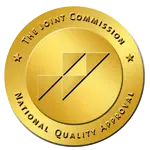At Pathways Recovery Center, we prioritize a deep understanding of the opioid withdrawal process as a key element in the recovery from opioid addiction. Opioid withdrawal is a challenging journey that unfolds when someone dependent on opioids reduces or ceases their use. The timeline and severity of withdrawal symptoms vary based on factors such as the type of opioid, duration of use, and individual health. Withdrawal symptoms usually begin a few hours after the last dose and progress through stages. Initial symptoms include anxiety, muscle aches, and insomnia, escalating to more severe symptoms like abdominal cramping and nausea, peaking around 72 hours post the last dose.
Most acute symptoms subside within a week, but some individuals may experience prolonged effects, known as Post-Acute Withdrawal Syndrome (PAWS), which can persist for weeks or months. Our approach at Pathways Recovery Center involves comprehensive care that addresses the physical and emotional challenges of withdrawal. Our treatment plans are tailored to provide the best support through each stage of withdrawal, ensuring a solid foundation for sustained recovery.
Opioid withdrawal represents a significant physiological response that occurs when someone who has developed a physical dependence on opioids abruptly decreases or stops their use. This withdrawal process is the body’s natural reaction to the absence of opioids, which it has become accustomed to. The nature and severity of withdrawal symptoms can vary widely, influenced by factors like the type of opioid used, the duration of use, and the individual’s health. Similarly, we address other substance-related inquiries to broaden our clients’ knowledge base, including ‘is ketamine an opioid?‘ Understanding the differences between various substances is crucial in our educational approach.
In a 2023 study using data from the National Epidemiologic Survey on Alcohol and Related Conditions-III, it was found that approximately 9% of U.S. adults with non-medical use of prescription opioids met criteria for DSM-5 opioid withdrawal syndrome (OWS). Notably, the prevalence of OWS was higher, about 20%, among those who regularly used opioids (i.e., ≥3 days/week). This data highlights the significant incidence of OWS in individuals with non-medical opioid use, emphasizing the need for effective withdrawal management and treatment strategies.
Opioid withdrawal, while intensely uncomfortable, is generally not life-threatening. However, it demands careful management, particularly for those with other health issues. The psychological effects, such as anxiety and cravings, are equally challenging and require professional support. At Pathways Recovery Center, we provide comprehensive support and treatment to effectively manage these symptoms, highlighting the importance of understanding these stages of withdrawal for anyone on the path to recovery. For more information on the duration of opioids in the body and related topics, you can read about how long opioids stay in your system.
The early symptoms of opioid withdrawal usually begin within a few hours after the last opioid dose. This stage is marked by various physical and psychological responses as the body reacts to the absence of opioids. Abruptly stopping or rapidly decreasing the dose can lead to significant challenges, including withdrawal symptoms, uncontrolled pain, and even thoughts of suicide. These potential consequences highlight the importance of careful management when discontinuing opioid use and underscore the predictability of early withdrawal symptoms. Such considerations are crucial in planning and executing opioid detoxification and withdrawal management strategies.
The early phase of opioid withdrawal often includes symptoms such as:
These early symptoms, while uncomfortable, are typically manageable under proper medical supervision. At Pathways Recovery Center, our medical team is experienced in providing the care needed to safely and effectively manage these symptoms, helping to ease the discomfort associated with this phase of withdrawal. This support is crucial, as proper management can significantly reduce the risk of relapse during the early stages of opioid withdrawal and recovery.
The peak phase of opioid withdrawal, typically occurring 48-72 hours after the last dose, is characterized by intense, physically demanding symptoms. This period’s significance is further underscored by the context of the opioid crisis in the US, where opioid overdose deaths, largely driven by fentanyl and other synthetic opioids, saw a 29% increase between 2020 and 2021. This alarming trend emphasizes the critical need for professional medical support during opioid withdrawal, as the risks associated with opioid use and dependency are substantial and potentially life-threatening. “Part of understanding the dangers associated with fentanyl, beyond its potent effects, involves recognizing its sensory properties, including its distinctive taste. Many users and medical professionals note that fentanyl has a very bitter taste, which can be a quick indicator of its presence. For those unfamiliar, knowing what fentanyl tastes like is crucial to avoiding accidental ingestion and understanding the immediate risks.
During the peak phase, individuals may experience a range of severe symptoms, including:
This peak stage is where professional medical intervention, like the care provided at Pathways Recovery Center, becomes essential. The intensity of these symptoms can be overwhelming and, in some cases, can lead to complications if not properly managed. Medical supervision ensures safe and effective symptom management, reducing the risk of potential complications and easing the overall discomfort associated with this stage of opioid withdrawal. Proper management also includes hydration, nutrition, and possibly medication to alleviate severe symptoms, thus supporting a safer and more comfortable withdrawal process.
The opioid withdrawal timeline is a complex process influenced by multiple factors, including the duration and intensity of opioid use, the specific type of opioid involved, and the individual’s overall physical health and metabolism. Research suggests that the withdrawal timeline can vary significantly from person to person, but there is a general pattern that most individuals tend to follow.
It’s important to note that while this timeline provides a general outline, the experience of withdrawal can be highly individualized. Factors like polydrug use, underlying health conditions, and personal history of addiction can alter this timeline. Professional medical supervision, such as that provided at Pathways Recovery Center, is crucial in effectively managing these symptoms and providing the necessary support for a successful recovery journey. Given the current opioid crisis and the potency of synthetic opioids, understanding the ‘fentanyl withdrawal timeline‘ is essential for preparing our clients and their families for the recovery journey ahead. The journey to overcome addiction to powerful opioids such as fentanyl involves a comprehensive and medically supervised detox process. This challenging first step is crucial for individuals dependent on fentanyl and seeking to reclaim their lives. For detailed guidance on how to get off fentanyl safely, our programs at Pathways Recovery Center provide specialized care and support, ensuring the best possible outcomes during the detoxification phase.
At Pathways Recovery Center, we are committed to delivering a comprehensive, empathetic, and medically informed approach to opioid addiction treatment. Our treatment strategies are designed to address the multifaceted nature of addiction, ensuring a holistic recovery experience for our clients.
Our medically-assisted detox program is a cornerstone of the treatment process, providing a safe and controlled environment for managing withdrawal symptoms. We utilize FDA-approved medications such as buprenorphine, methadone, and naltrexone, which have been proven effective in reducing the severity of withdrawal symptoms and cravings. This approach not only eases the physical discomfort associated with detox but also enhances the likelihood of a successful transition to long-term recovery. Part of our comprehensive education effort involves clarifying common misconceptions about medications used in treatment, such as answering the question, ‘is pregabalin an opioid?‘ This ensures our clients have a clear understanding of their recovery process.
The residential inpatient program at Pathways Recovery Center offers a structured and supportive setting, essential for clients in the early stages of recovery. Our facility is designed to eliminate the distractions and triggers of everyday life, creating a serene environment conducive to healing and self-discovery. The program includes a variety of therapies, counseling sessions, and support groups, all facilitated by experienced professionals. These interventions are tailored to address individual needs, fostering personal growth and development.
We believe in the power of therapy and counseling as vital tools for addressing the root causes of addiction and facilitating long-term recovery. Our center provides a range of therapeutic modalities, including individual counseling, group therapy, and family therapy sessions. These sessions are aimed at uncovering underlying issues, teaching effective coping strategies, and building a supportive network, all crucial for sustained recovery.
Understanding that recovery is an ongoing process, Pathways Recovery Center places a strong emphasis on aftercare planning and support. We strive to equip our clients with the tools and resources needed to maintain their sobriety and navigate the challenges of post-treatment life. Our aftercare services include continued counseling, support group meetings, and relapse prevention strategies, ensuring that our clients feel supported and empowered in their journey towards lasting recovery.
At Pathways Recovery Center, we are dedicated to providing a path to recovery that respects the dignity and individuality of each client, integrating evidence-based practices with compassionate care to foster healing and hope.
Choosing the right treatment center is a crucial step in the journey to recovery from opioid addiction. At Pathways Recovery Center, we pride ourselves on our experienced and compassionate team of professionals who are dedicated to providing personalized care. Each treatment plan is tailored to the individual needs of our clients, ensuring that both the physical and emotional aspects of addiction are addressed.
Our approach to treatment is holistic, focusing on physical, mental, and emotional health to foster a well-rounded recovery. We also emphasize the importance of a supportive community, creating an environment where clients can find healing and growth through shared experiences and mutual support. Understanding the opioid withdrawal symptoms and timeline is essential in the path to recovery. We at Pathways Recovery Center are committed to providing the necessary care and support to navigate this challenging but rewarding journey. If you or a loved one is struggling with opioid addiction, we are here to help. Contact us today to start your path to recovery.








